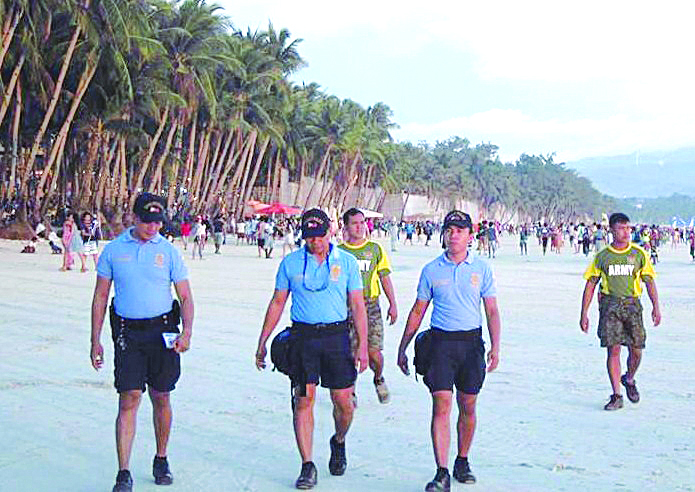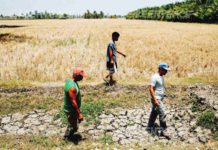
ILOILO City – The Police Regional Office 6 (PRO-6) urged residents and business operators in Boracay not to resort to violence even if they disagree to the impending closure of the island for rehabilitation.
The world-famous island resort, currently facing environmental problems, will be closed to tourists for six months beginning April 26.
PRO-6 will be deploying 610 police personnel to Boracay.
“We appeal to residents and affected businesses in Boracay not to resort to violence,” said Chief Inspector Joem Malong, PRO-6 spokesperson.
The 610 policemen will come from the Aklan Police Provincial Office (126), Boracay police substation (300), Regional Civil Security Unit 6 (4), Aklan Provincial Highway Patrol Unit (13), Aklan Provincial Criminal Investigation and Detective Team (1), and augmentation personnel from PRO-6 (166).
The sendoff is on April 12.
“There has been no riot or rally in the island so far. But the Police Regional Office 6 is prepared for whatever will happen as a result of Boracay’s closure for rehabilitation,” said Malong.
Some of these policemen were new to the service and recently trained on Civil Disturbance Management, revealed Malong.
The Philippine Army’s 301st Infantry Brigade (31IB) will also deploy soldiers to Boracay.
According to 301IB commander Brigadier General Pio Diñoso, these soldiers will come from, among others, the 12th Infantry Battalion based in Camp Monteclaro, Miag-ao, Iloilo.
The Deputy Regional Director for Operations of the PRO-6 has been designated as commander of the policemen collectively called the Metro Boracay Task Force (MBTF).
Senior Superintendent Jesus Cambay Jr. was designated to the post by Chief Superintendent Cesar Hawthorne Binag, regional police director.
MBTF’s goal is to ensure the smooth, peaceful and orderly rehabilitation of the island resort, said Malong.
Because the closure and rehabilitation of Boracay affects the locals, resort owners and workers, among others, Malong said the PRO-6 assumes that rallies or any acts of violence could transpire in the island.
“There is a high probability that it will happen so we are really preparing for it,” said Malong.
Boracay is made up of three barangays – Manoc-Manoc, Balabag and Yapak. As of the 2010 census, its population was 28,369.
Over the years, runaway development, the influx of people beyond the island’s carrying capacity, poor implementation of environmental regulations, and encroachment of structures have taken a toll on the 1,032-hectare island.
On Monday, President Rodrigo Duterte said the entire Boracay would be subjected to land reform and given to farmers after the island’s six-month rehabilitation.
In a press conference in Davao City before flying to China, Duterte cited a law that classified Boracay as agricultural and forestal.
“I-land reform ko na ‘yan, mas mabuti pa. I’ll tell you now. I-land reform ko lahat ‘yan then I’ll give it to the farmers,” said Duterte
The half-a-year closure was recommended by the Department of Environment and Natural Resources, Department of Tourism and Department of Interior and Local Government.
In March, Duterte likened Boracay to a cesspool and threatened to shut it down.
“The law says it is forestal, agricultural. Why would I deviate from that? Do I have a good reason?” asked Duterte. “Lilinisin ko lang naman, ibalik ko sa Filipino ‘yung mga lupa nila.”
On May 22, 2006 then President Macapagal-Arroyo issued Presidential Proclamation No. 1064 that classified as alienable and disposable 628.96 hectares in Boracay and the rest as protected and forestland areas. (With a report from the Philippine News Agency/PN)



